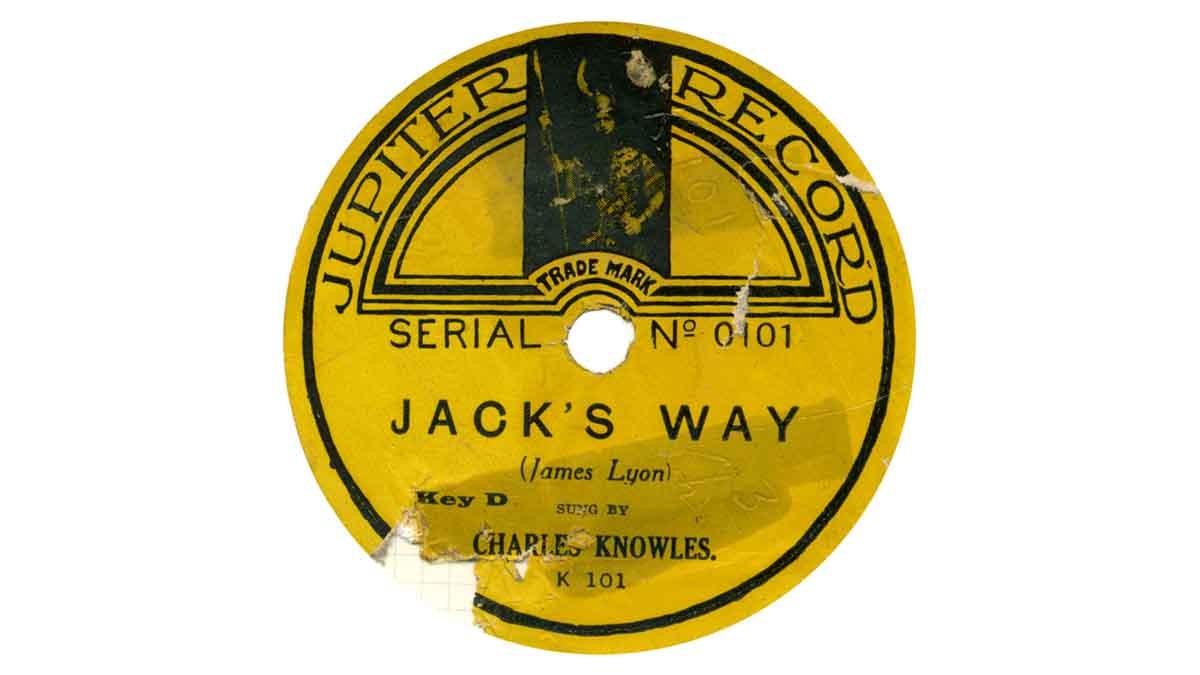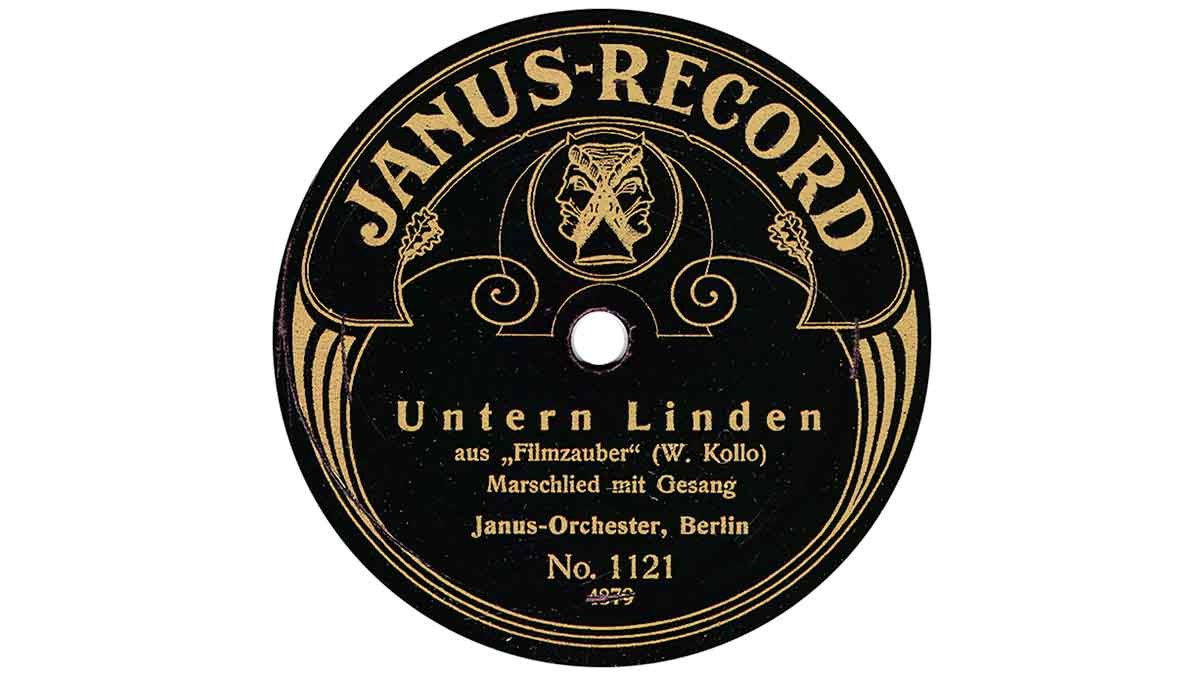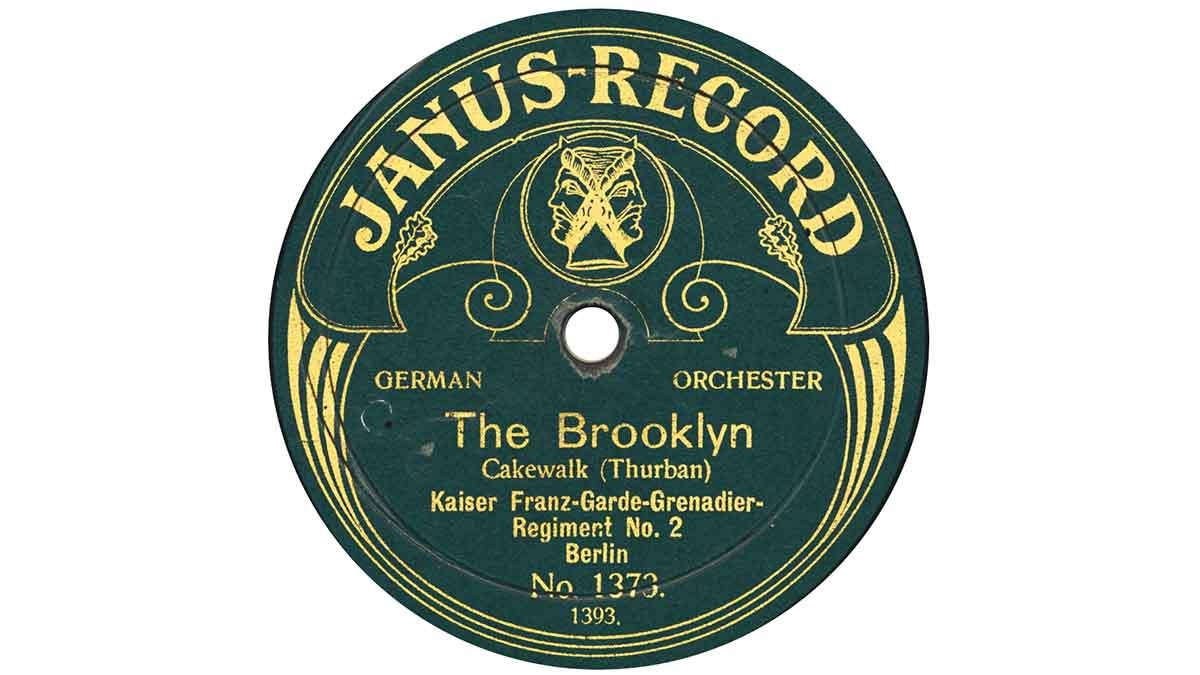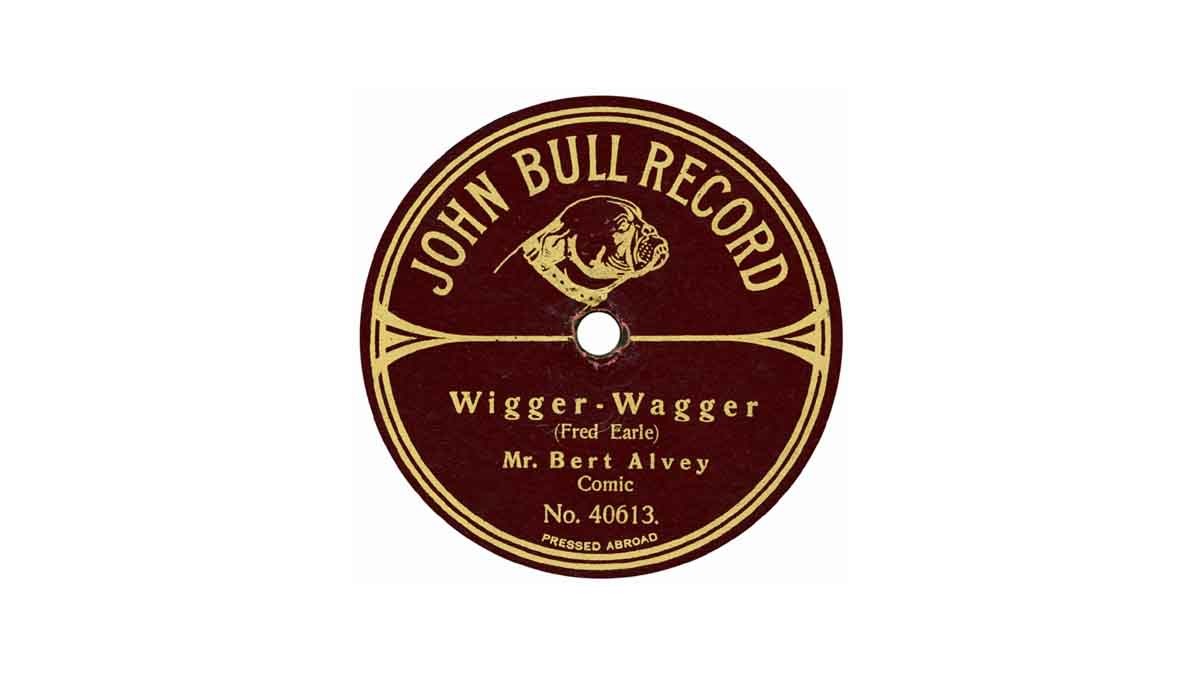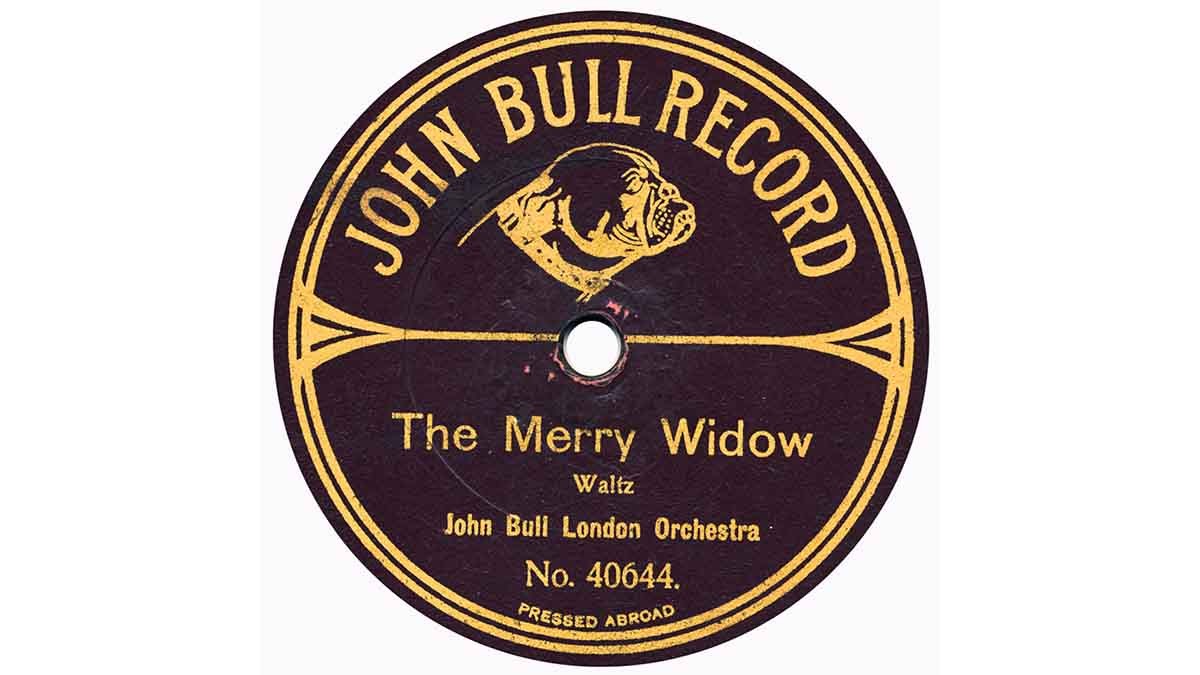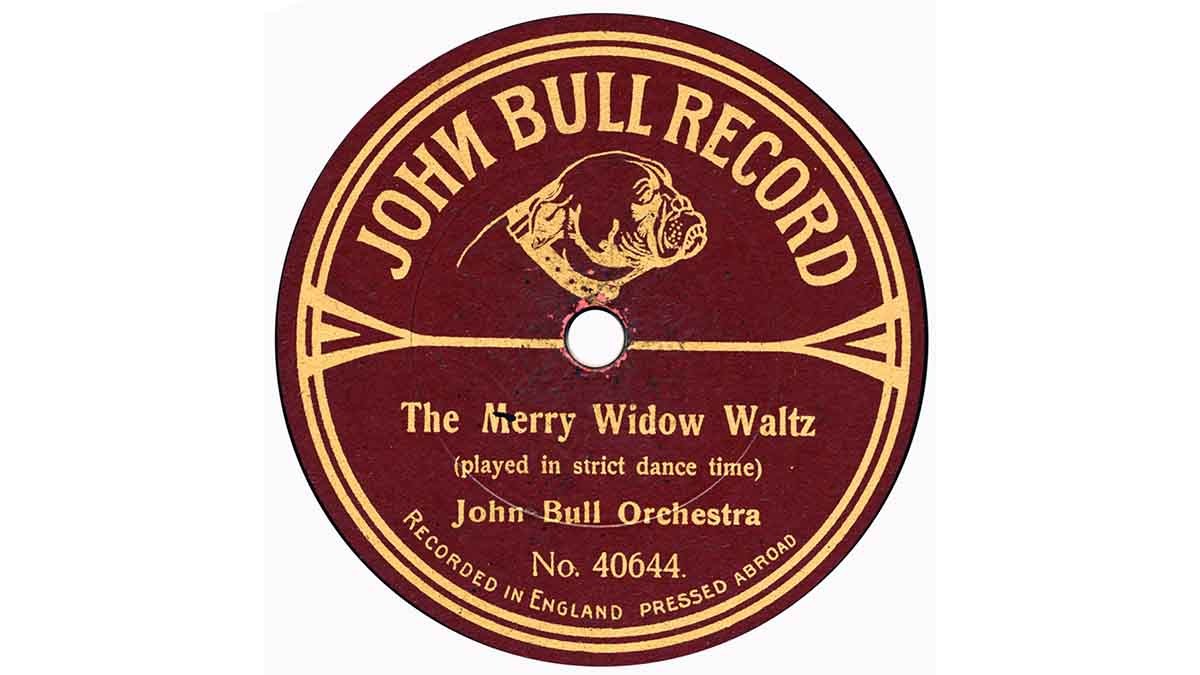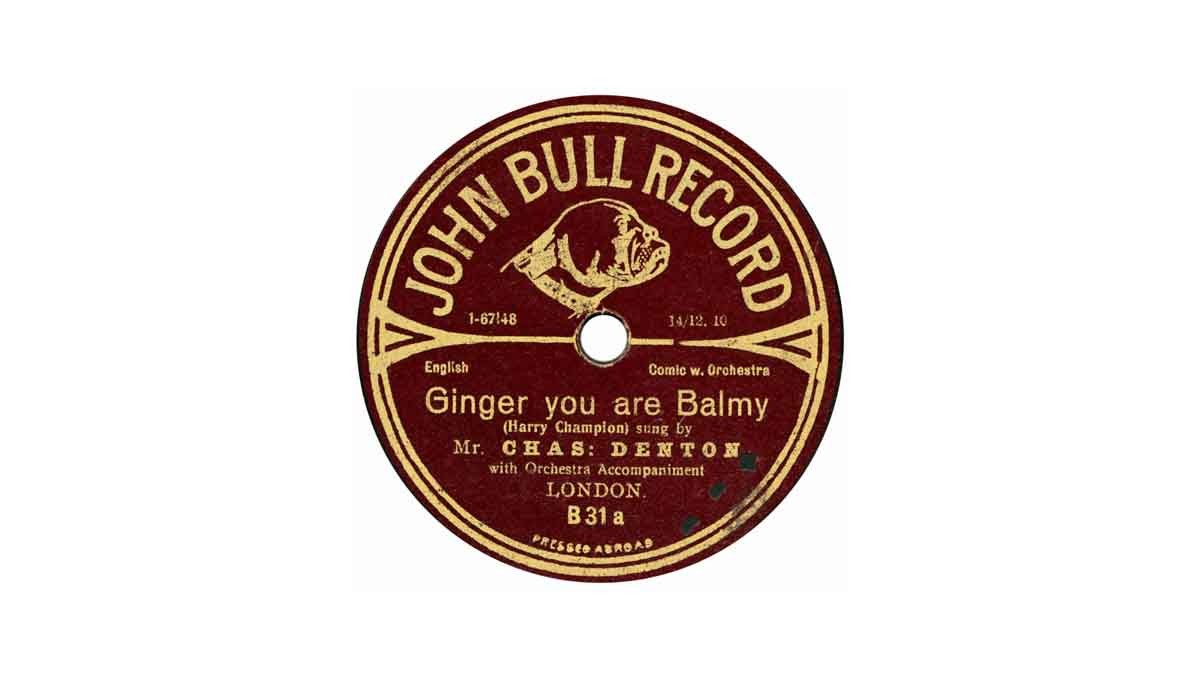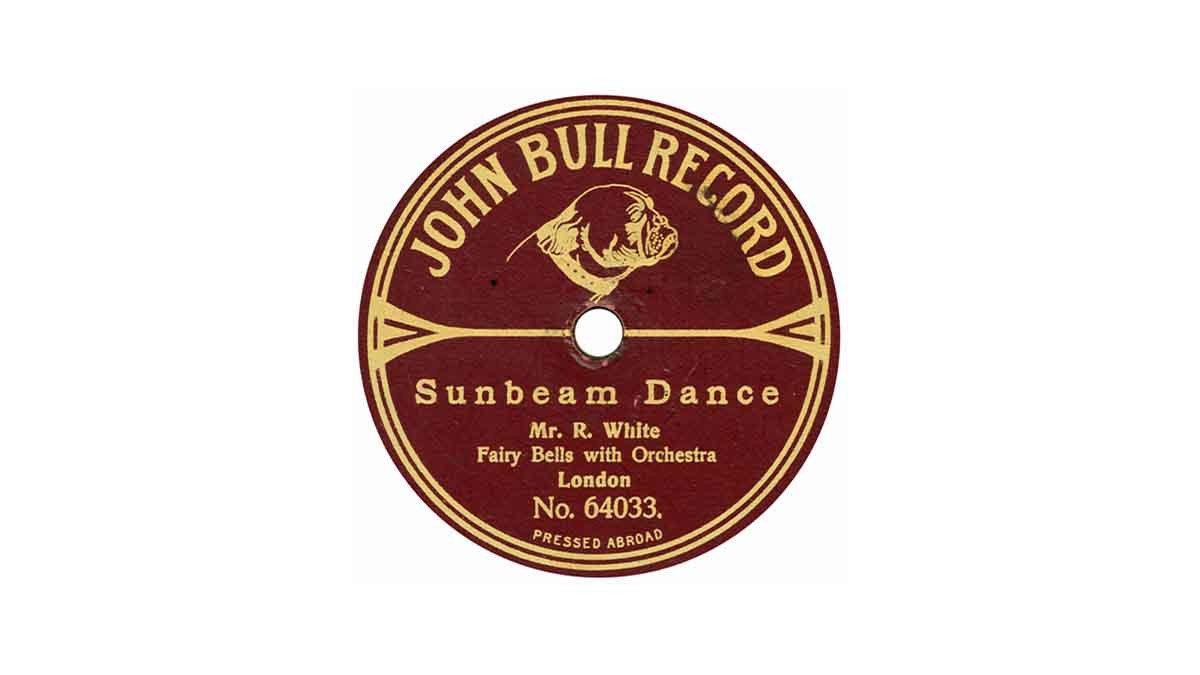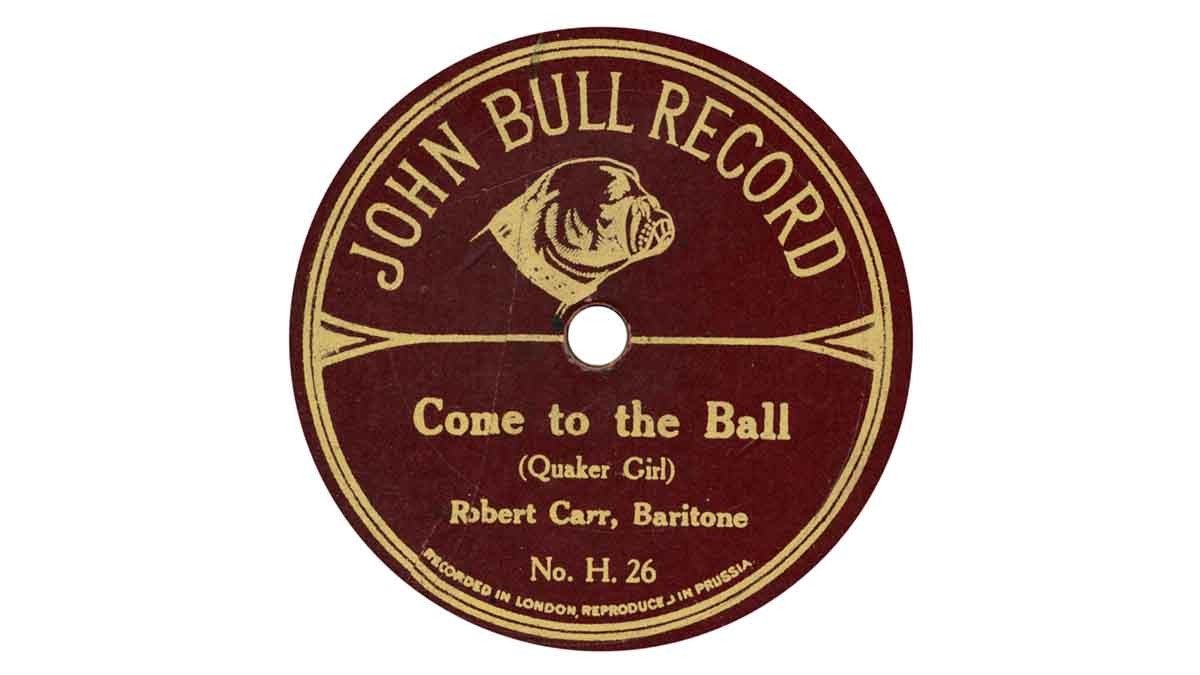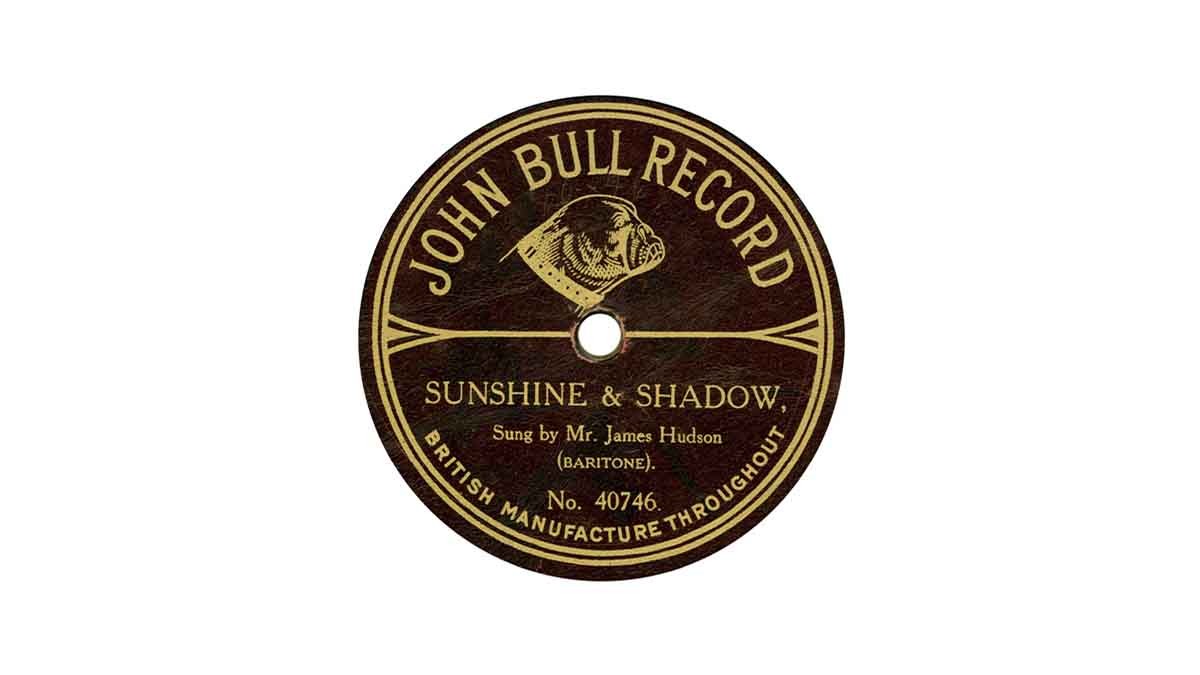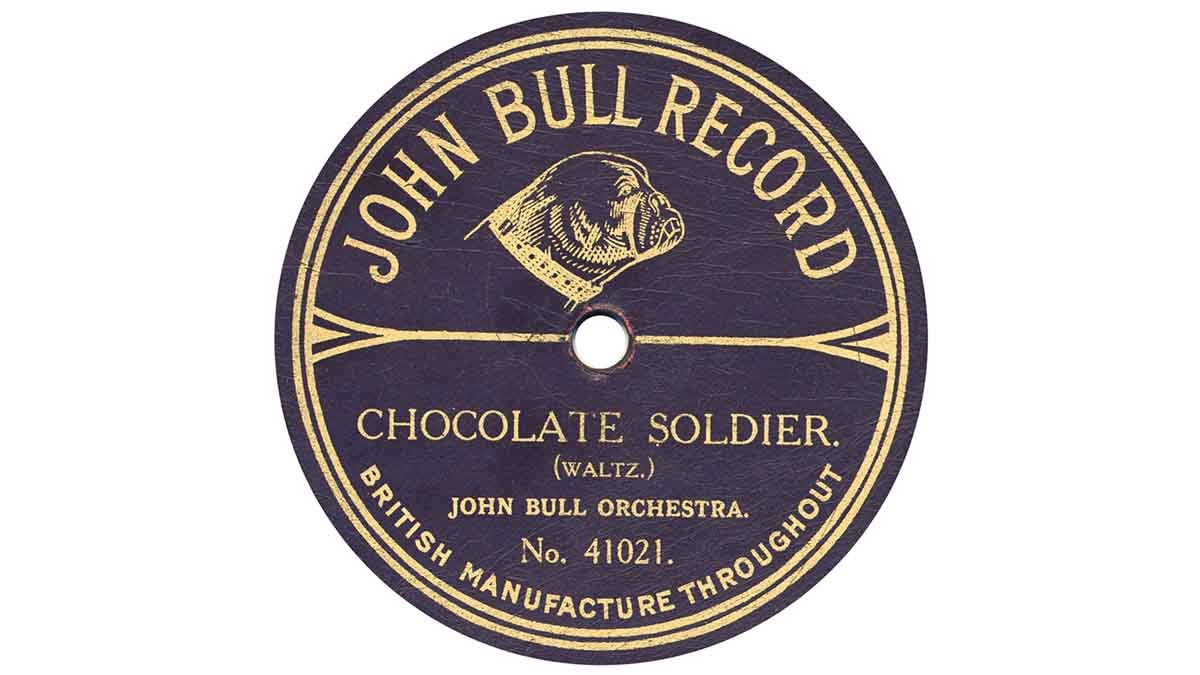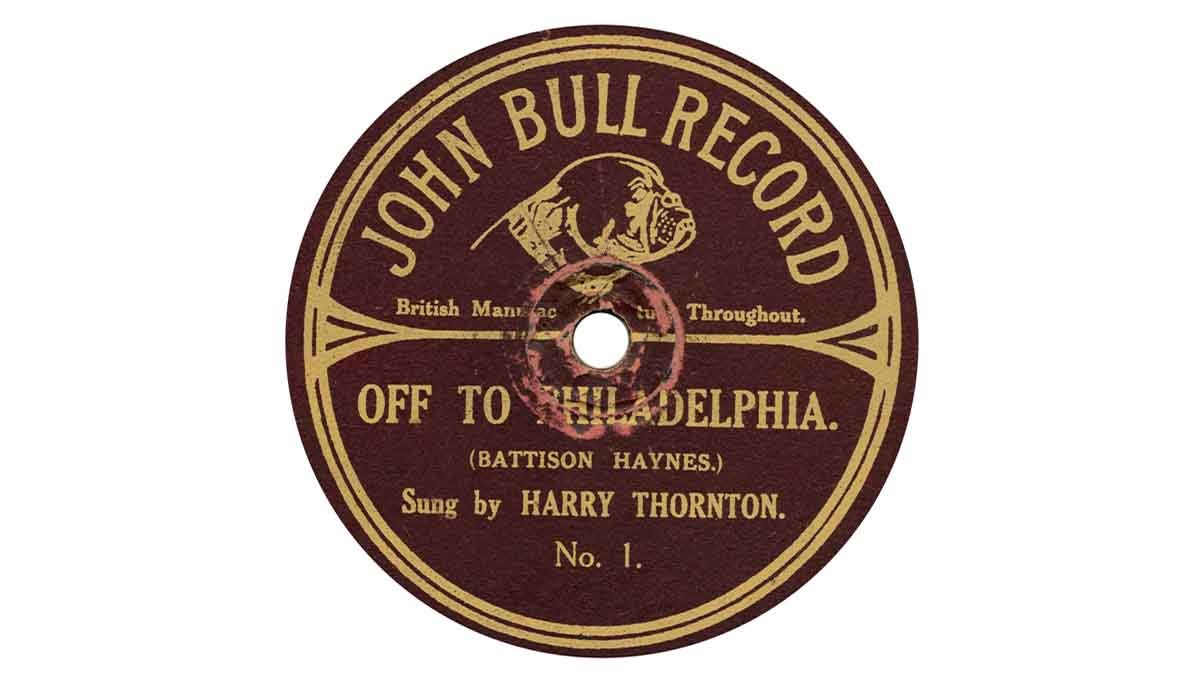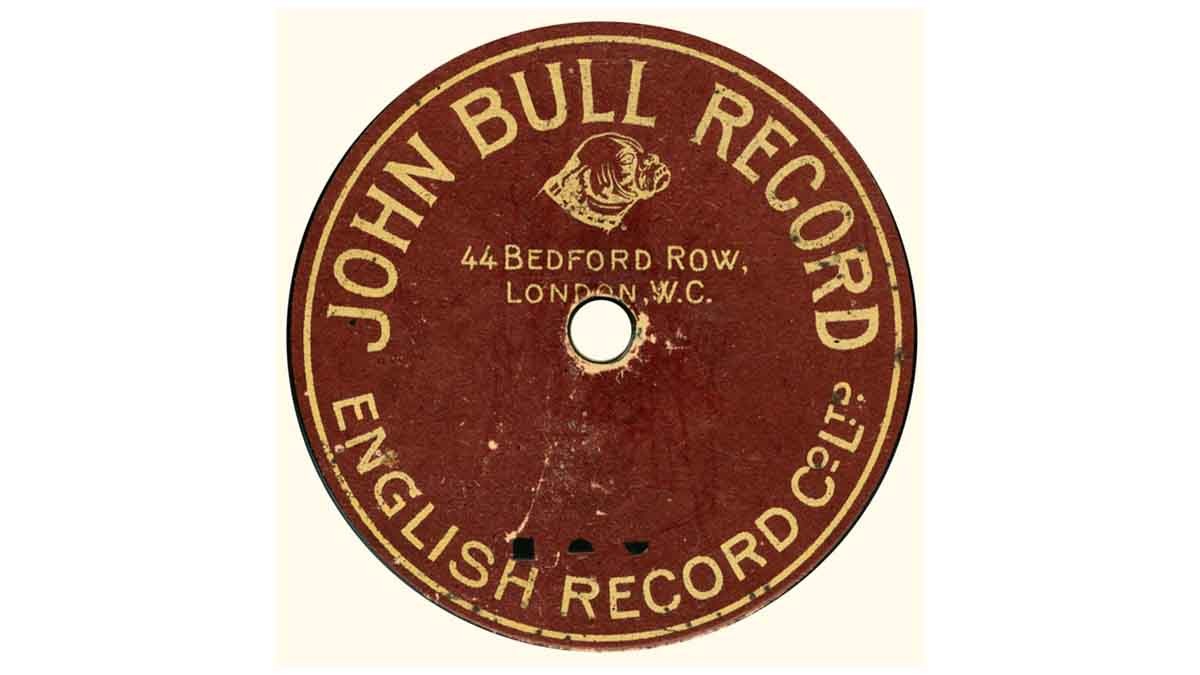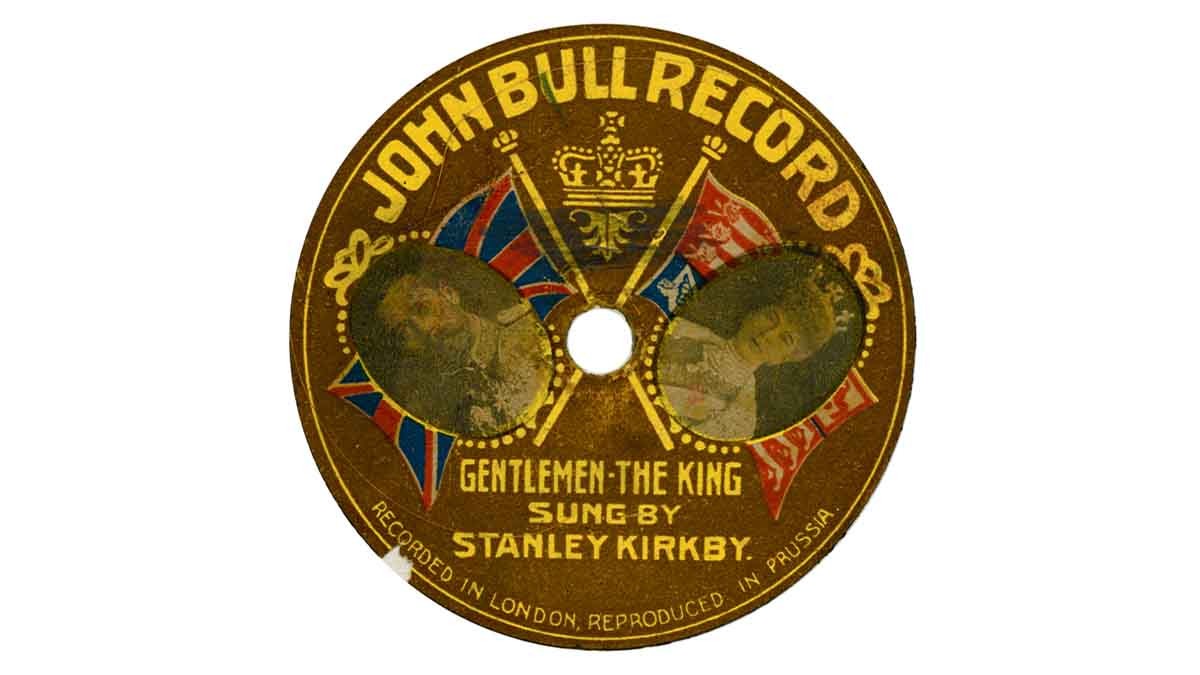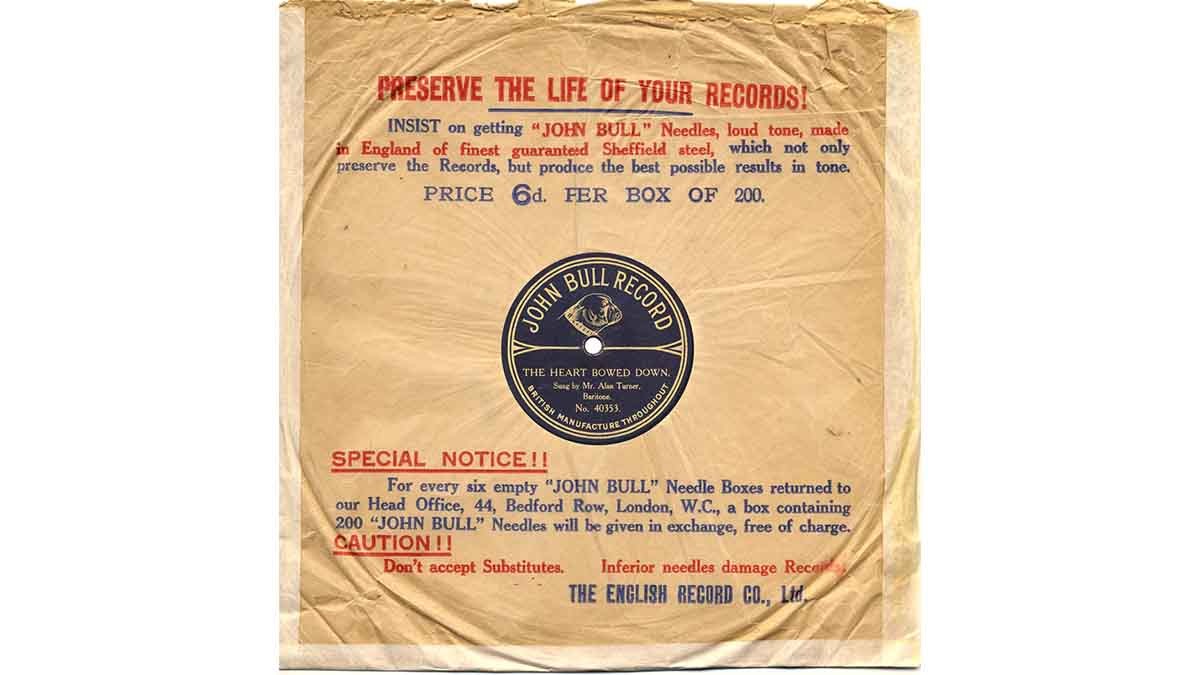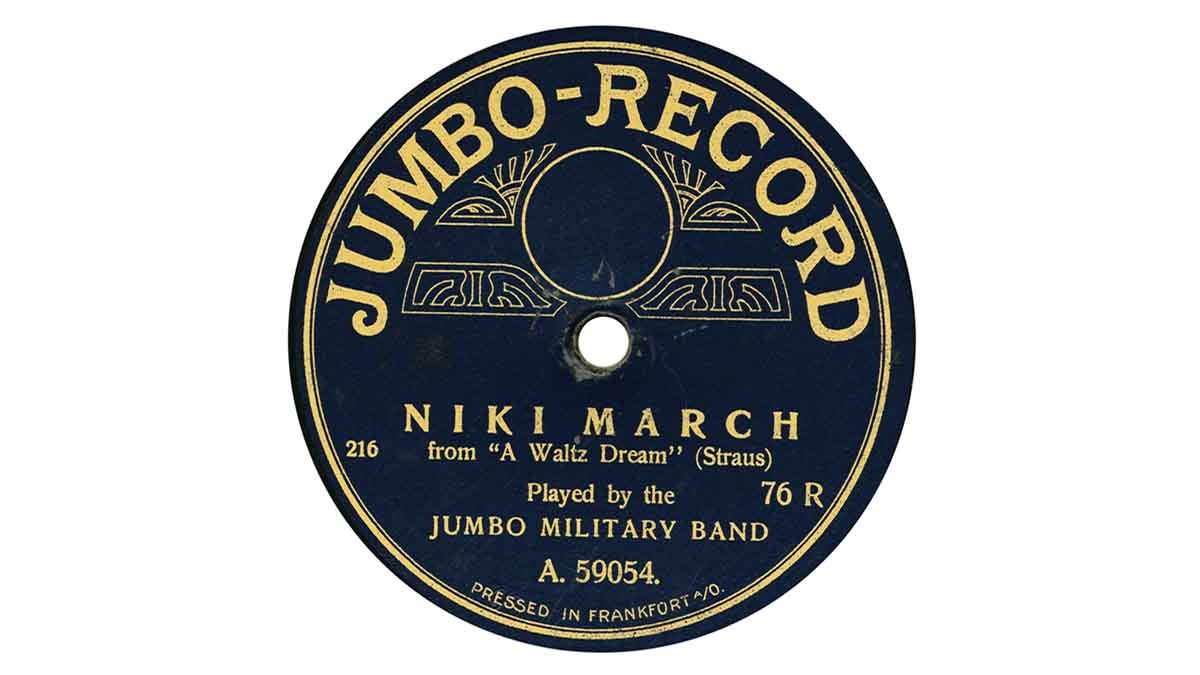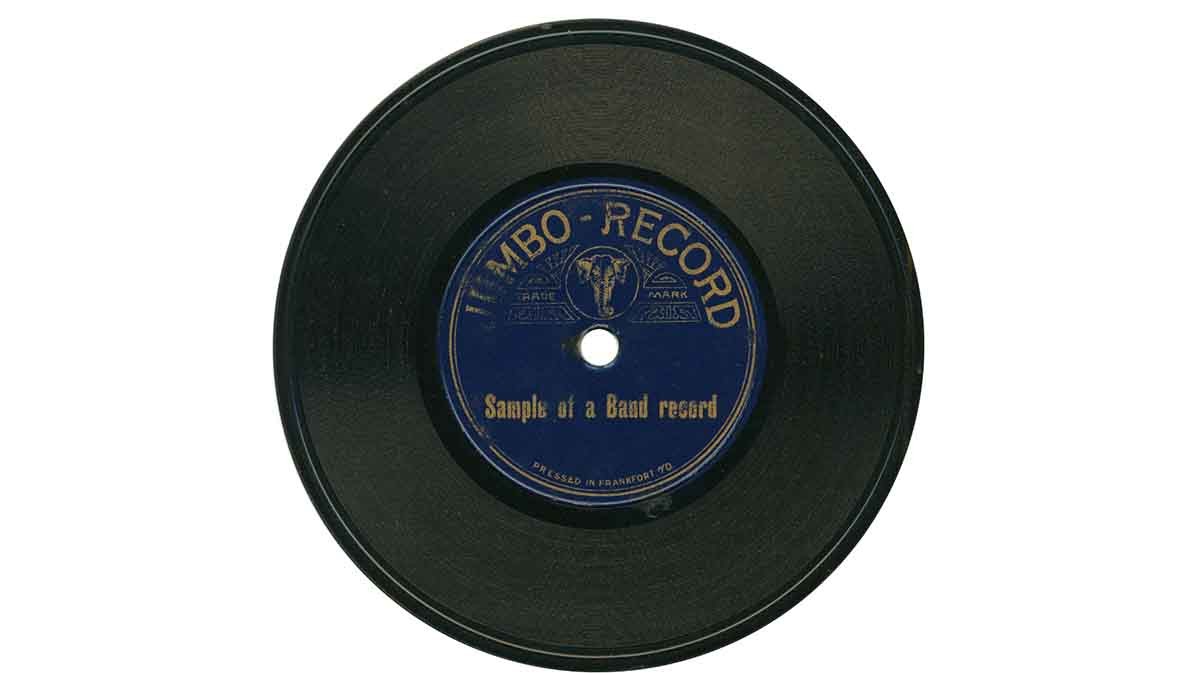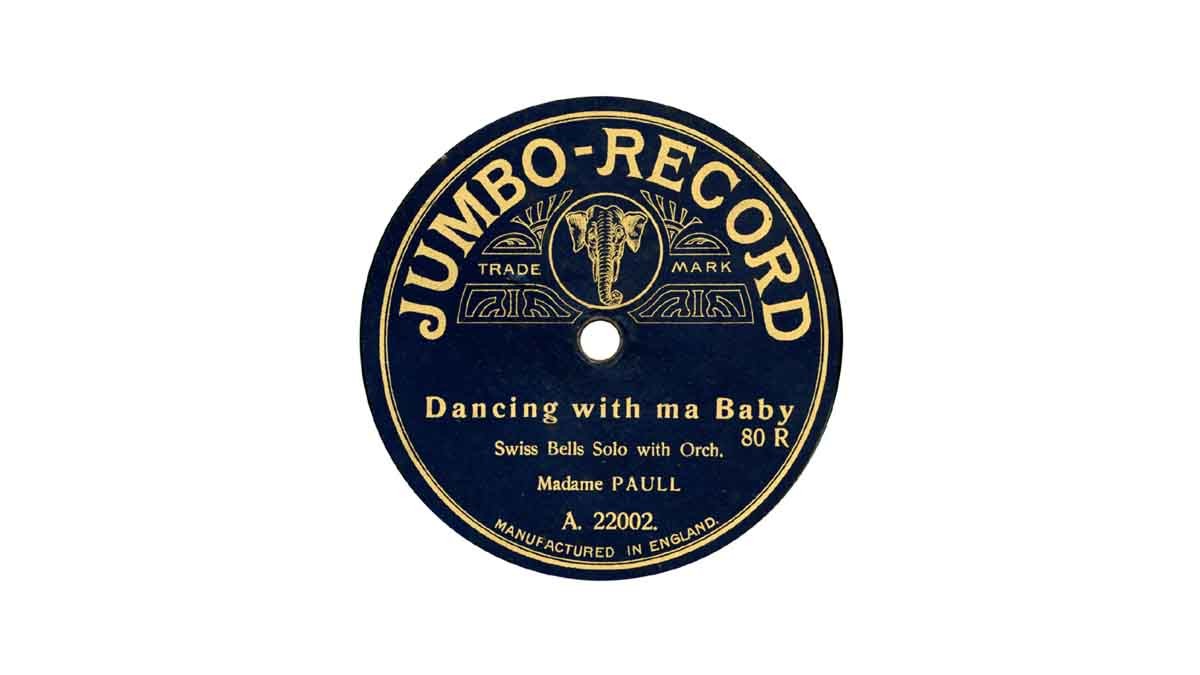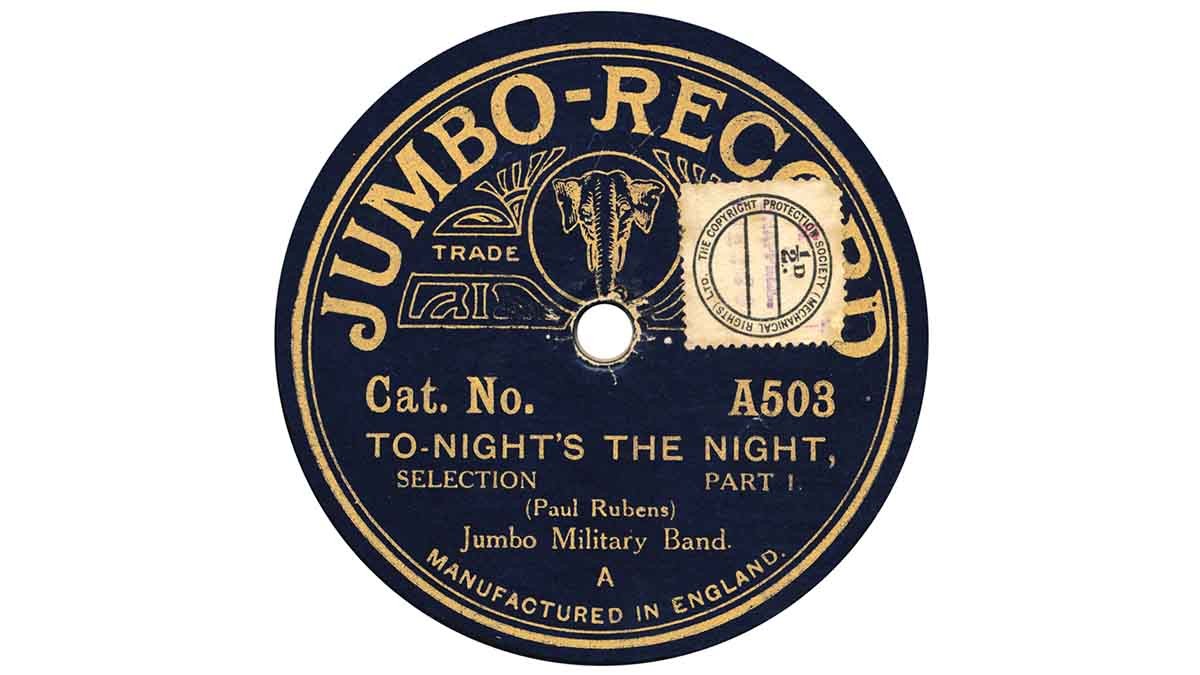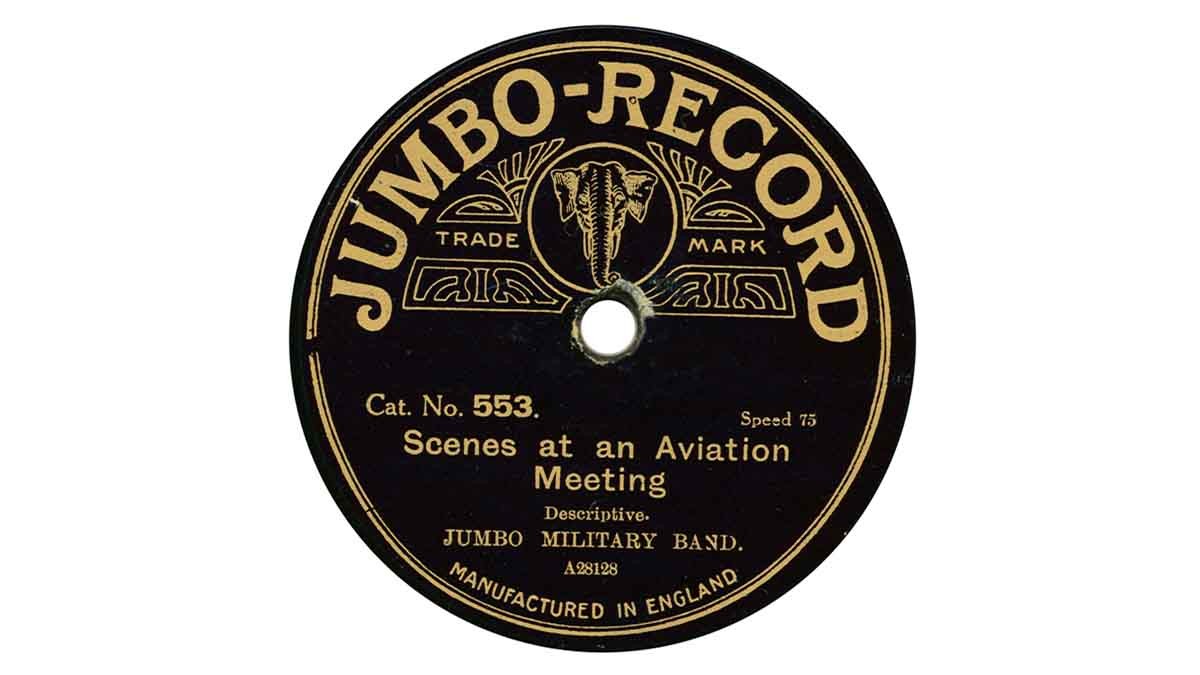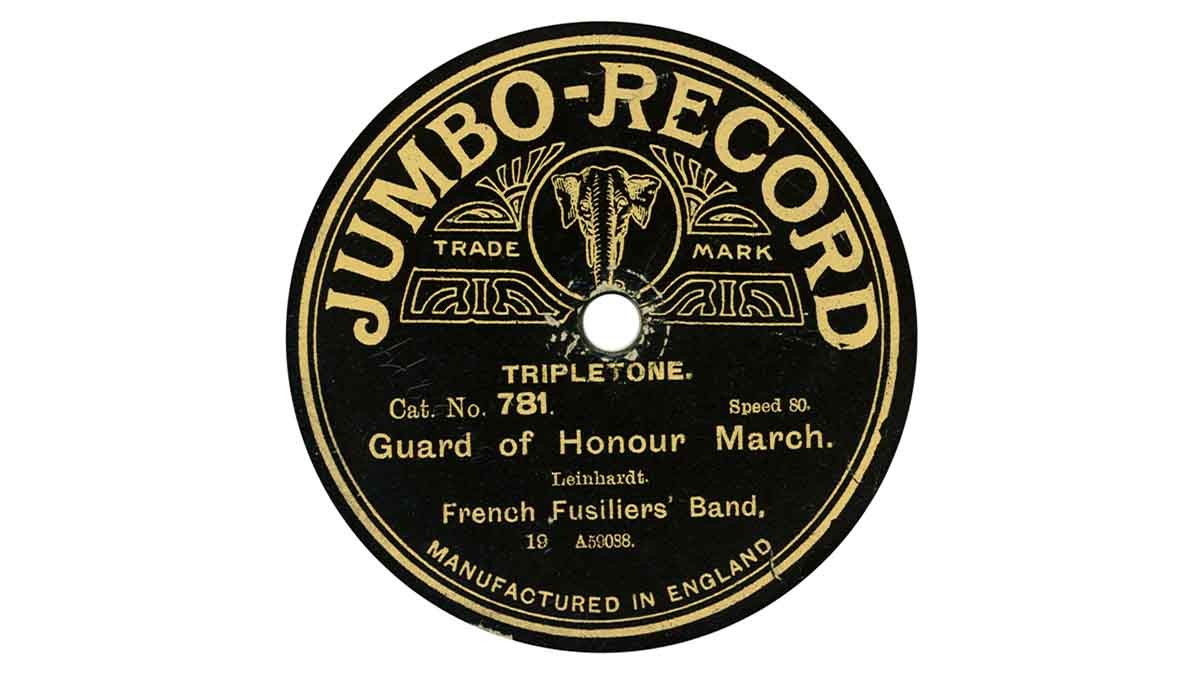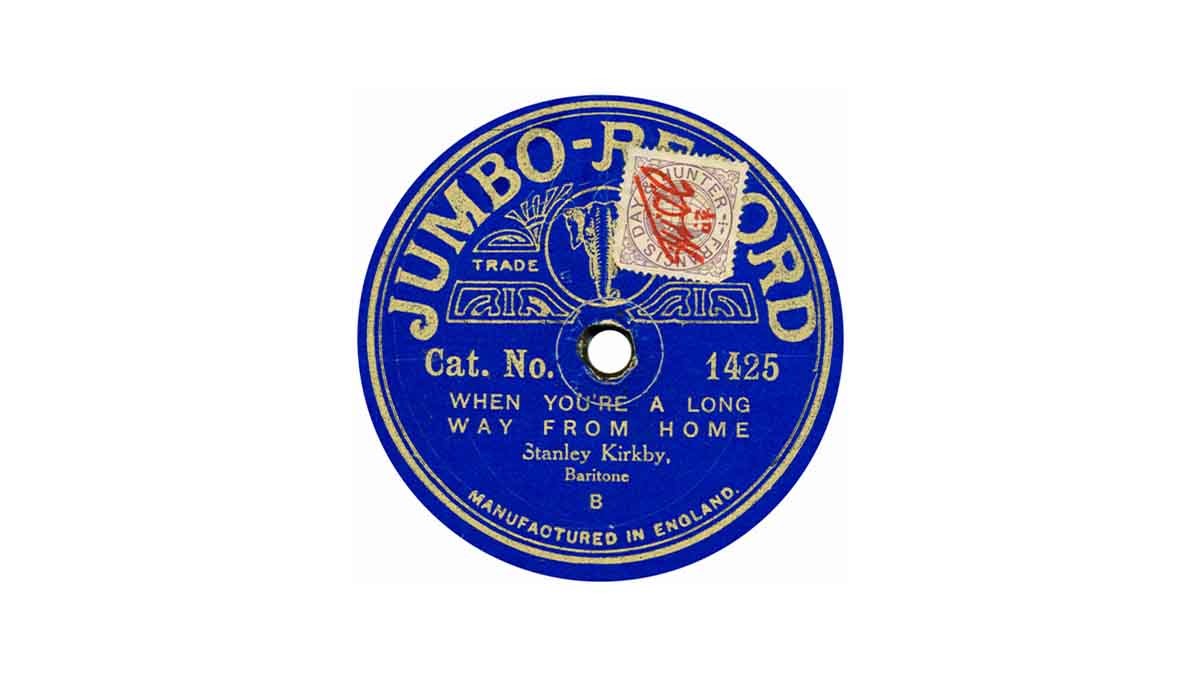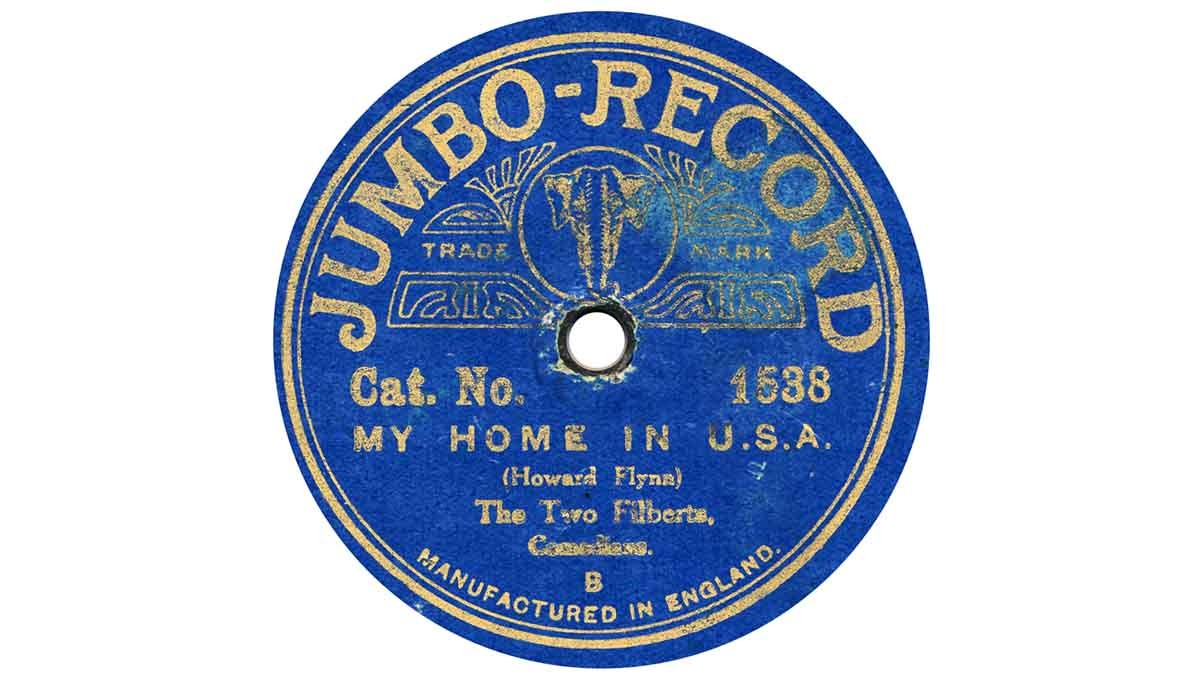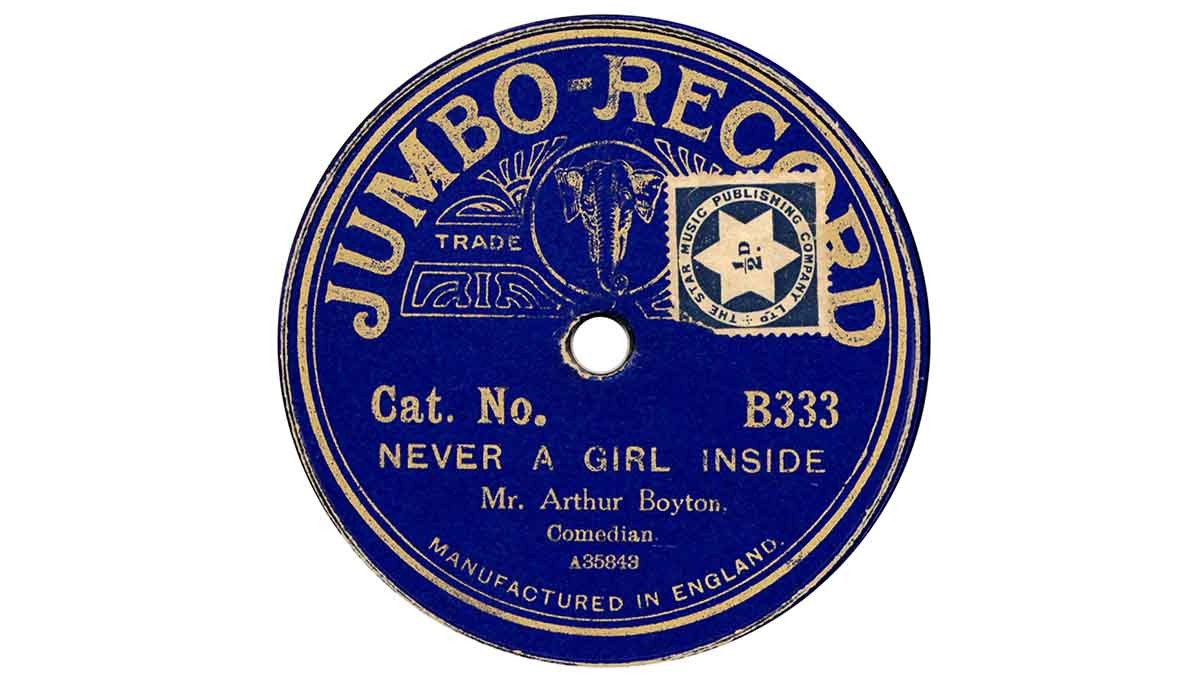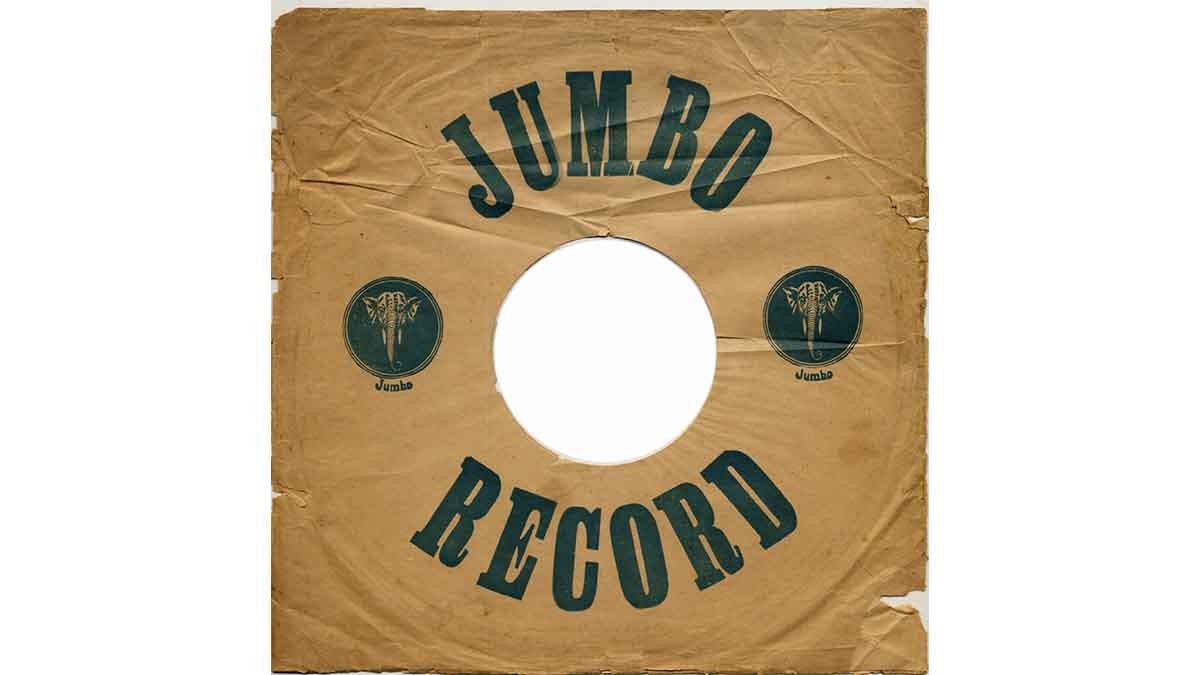
Early British record labels 1898-1926: J
Jaycee | Janus | JLCO | John Bull | Jolly Boys | Joseph Williams Ltd. | Jumbo | Jupiter
Jaycee
See Frank Andrews, Hillandale News 181, August 1991. In this article, Frank deals with the various disc labels sold by the Co-operative Wholesale Society. Their most commonly-encountered label is the 8″ (20cm) Unison record, clones of the Broadcast label. These, being electrically recorded, do not fall under our umbrella, so to speak. However, about 1926, a small batch of 10″ (25cm) ‘Jaycee’ issues were manufactured by Crystalate, from their acoustic Imperial masters. It had always been assumed by collectors that these were sold by the ‘Co-op’, on the grounds that ‘Jaycee’ was a brand of cigarettes sold by the CWS, and hence a ‘house marque’. Frank attempted to establish this as a definite fact. On the plus side, ‘J. C.’ were the initials of John Cragg, who founded the CWS tobacco factory in 1898 and ran it for 37 years. But in spite of his efforts in corresponding with the CWS archive and requesting information in the CWS magazine ‘Wheatsheaf’, Frank was not able to establish this as a fact. Therefore, as ‘J.C.’ must be a very common pair of initials, we can only sum up by saying that a small pilot batch of around 20 Jaycee issues appeared around 1926. Because they did not sell very well (they are scarce), no further issues were made. Still, the client might have been the CWS – but who knows?
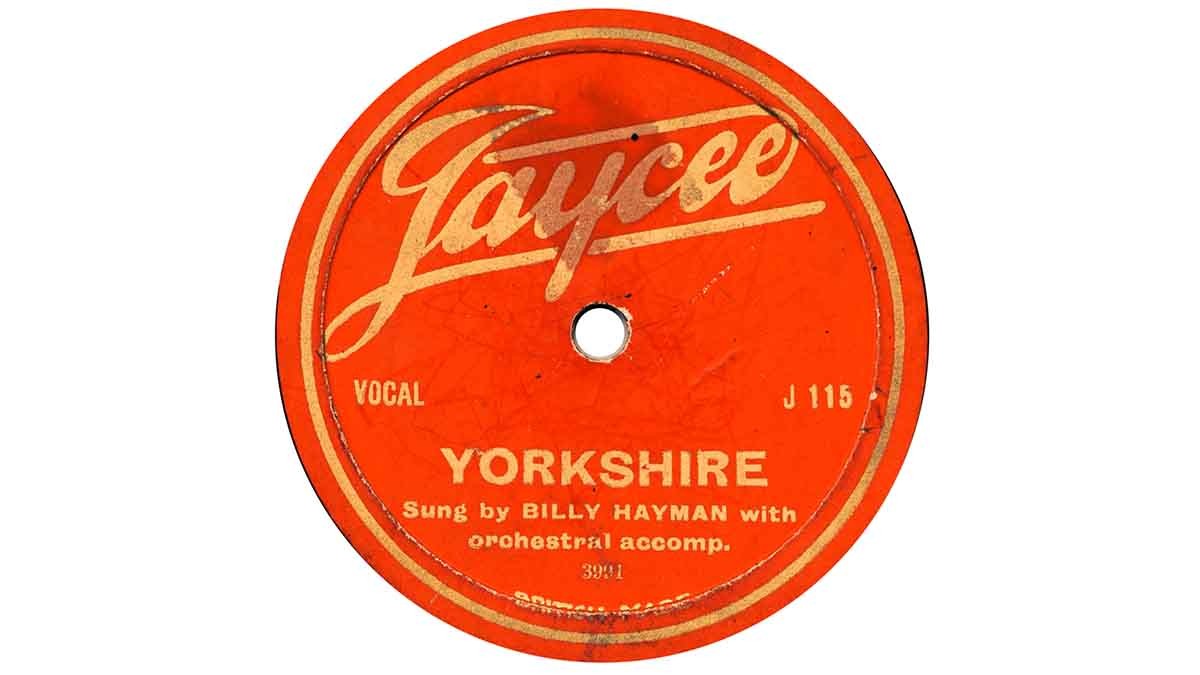
Janus
See Frank Andrews: FTR 4, 2002/3, pp 196-7. Frank researched this German label on the basis that the company was granted a registered trade mark in the U.K. in August 1912. As one would expect, the illustration was of Janus, a senior Roman god with two faces – one looking forwards, the other backwards, being the god of portals, and of beginnings. Therefore it must have been the intention of the parent company (Vereinigte Schallplatten-werke Janus-Minerva G.m.b.H.) to market discs over here, either directly, or by appointing a British agent. Apparently they did not do so; at least, none have ever been found, but that is not quite the same thing. They may have just sent over some samples – who knows? Besides, a rumour persists that a few Janus records carry British recordings. In that case they would qualify for inclusion here on that ground alone. If there is a U.K. involvement it would be circa 1912-1914.
JLCO – actually ILCO, q.v.
John Bull
See Frank Andrews: TMR 73, 1987; FTR 5, 2003, pp268-273. The first article has many rare and fascinating illustrations; the second embodies his more recent research. It is impossible to summarise Frank’s long and excellent articles here. Suffice it to say that these records are common, and were sold from 1909 to 1913. They were not sold in shops, but door to door, by the ‘tallyman’ method. A salesman would call, and offer a gramophone on free loan for a year, as long as the ‘borrower’ bought one record a week during that time. The gramophone then became the property of the record buyer. The catch was that the price of the discs was 2/6d (12.5p). This was expensive at the time, and became even more so as the years passed. This, because ‘price wars’ soon raged, knocking the cost of good, well-made discs down as low as 1/1d (5.2p). Indeed, many of the same masters that appeared on John Bull (always at 2/6d) were available on other makes at 1/6d and even below. The orthodox gramophone trade detested the John Bull and similar labels; not so much because they were fleecing the public, but because the tallymen had few if any overheads – e.g. no shop premises to rent. They were therefore competing with normal retailers by ‘unfair’ means. First made in Germany by Beka, that company was pressurised to stop doing so. They were then made by Favorite, and also made in the U.K. Their catalogue and face numbering is a minefield, as they sometimes held over the same number for re-recordings. There is one John Bull here remade by Favorite, where Favorite (usually a very meticulous company as to detail) have used the original Beka master number as their face number. The company history is also very complex, but in late 1913 ownership passed to the Albion Record Co. Still, in spite of all the ramifications, they certainly did manage to shift a lot of records – they turn up commonly to this very day, though the special commemorative 1910 King George V Coronation record is scarce. Incidentally, since being a child (yes, I had ‘old 78s’ even then!) I have always found the image of the bulldog horribly repulsive, more like a Hound of the Baskervilles – though that particular canine was a giant mastiff; still, I wouldn’t like to meet the ‘John Bull’ bulldog on a dark night…
Jolly Boys
See Frank Andrews & Arthur Badrock, TMR68, 1984. This was one of a related group of five small-diameter records, manufactured for the British Homophone company by none less than ‘Mighty HMV’. HMV tended not to manufacture discs for other people; one assumes they were generally absorbed in higher things. 8^) However, in 1926 they did a great deal of recording and pressing for Sternberg, head of British Homophone. HMV had adopted the new Western Electric recording system in early 1925, but these small 6″ (15.25cm) discs were made by the old mechanical system. It is conjectured that this was to keep the cost as low as possible, for there was a royalty of one penny per disc to be paid to WE for this new technology. The principal label concerned was ‘Homo-Baby’; the satellite labels were Sterno-Baby, Jolly Boys as here, Dixy, and one single Conquest disc. All are scarce to boot. Not everything on Homo-Baby appeared on its clones. It is not known who retailed Jolly Boys or Dixy.
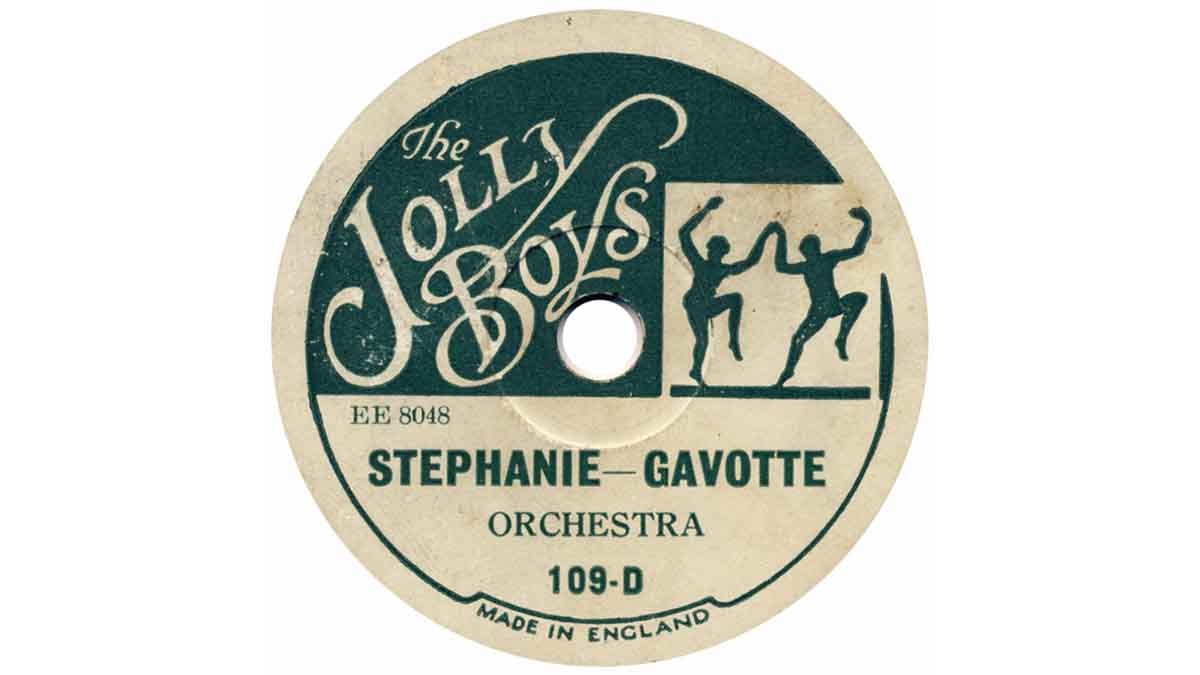
Joseph Williams Ltd.
See Frank Andrews, FTR 10. Suppose you were to find an early 10″ diameter single-sided disc with a red label and white printing? And suppose the name of the tune was wrapped around the top of the label rather than the make of the record? Well; if the label went on to say: Joseph Williams Ltd., 32 Great Portland St., London W., then you would have found a very, very scarce disc indeed! For Joseph Williams was a music publisher, and Frank informs us that a number of his works were recorded by the International Zonophone Co. around 1901-1904. Evidently pleased by this, Williams got Zonophone to make custom pressings of the discs of his material, with the above-described label. Presumably he sold them in Great Portland Street, or used them to demonstrate his tunes, songs and works. Who knows? But as Frank points out, this label must be one of the earliest ‘contract pressings’ in this country. Hen’s teeth.
Jumbo
See Frank Andrews, BRI, and above all, Frank Andrews: ‘A Fonotipia Fragmentia’ TMR 40, 41, 42, 44, 45. June 1976 – April 1977. Jumbo records were enormously successful, and still turn up from time to time. They appeared in this country in August 1908, and became, in effect, a ‘budget label’ of Fonotipia; indeed, ‘MADE FOR THE FONOTIPIA COMPANIES’ is pressed into the wax of many of them. Reference to Frank’s writings above is really essential to understand the rapid but complex changes that involved the various companies: Fonotipia, Odeon and Jumbo – all of which were under the aegis of the Carl Lindström concern by 1914. The first example has no elephant, because there was already a label in the U.K.called Elephone, which had, rather predictably, an elephant as a trade mark. But they folded in 1909, so the way was clear for Jumbo to take over the elephant trade mark, at least for gramophone records. They were firstly a product of the Jumbo Record Fabrik GmbH, located at Frankfurt an der Oder (not to be confused with the larger Frankfurt am Main). Only the very earliest were pressed at Frankfurt A/O. British issues (with local recordings too) were soon pressed here by Crystalate, and later at their own factory, which Lindström built at Hertford; hence ‘Manufactured in England’ is most usual on this label. On the outbreak of War in August 1914, the Lindström labels continued for some time, as they were produced by a properly constituted British Company. In 1916 the ‘Trading With The Enemy Act’ of 1914 was applied with increasing rigour, and the Hertford factory was taken over by the Board of Trade. It continued to produce discs under British control, though the Jumbo label was re-named Venus, and continued with the same catalogue series. Thus it is possible to have Venus records which ‘reach back’ into the Jumbo catalogue numbers; e.g. 1538 above is a high number for a Jumbo; yet we have a Venus 1363 illustrated elsewhere on this site.
Jupiter
See Frank Andrews: FTR 10, 2004, pp74-75. This bedraggled label, which has been removed from its disc, is still worthy of a place here. There were relatively few private individuals who had their own records made – but bass-baritone Charles Knowles was one. Only two issues were made, 0101 and 0102. The date is uncertain, but Frank suggests they were contemporary with the black and yellow Currys, which would make them about 1922. If you look at the large image, you will see some handwriting under the label to the right of the composer credit: ‘WD 3’. WD is the indefatigable William Ditcham, who was currently a recording expert for the Sound Recording Company. So these 2 elusive discs were presumably recorded by the SRC and pressed by Crystalate.
